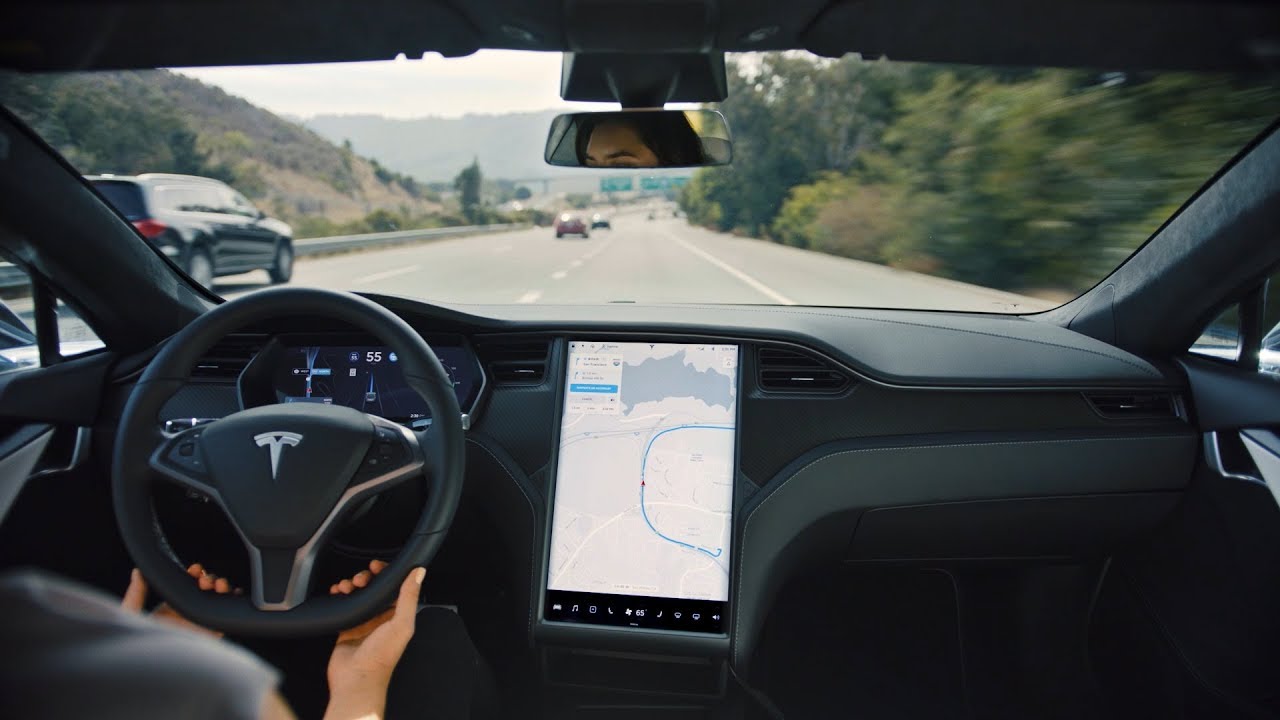The Insurance Institute for Highway Safety (IIHS) tested Tesla Autopilot safeguards and found that drivers are pretty quick to adapt to the windows of opportunity the suite gives after warning them to pay attention.
The IIHS study sought to determine whether partially automated driving systems and their safeguards increase driver attentiveness. With the rollout of more advanced driver assistance systems (ADAS) and semi-autonomous driving functionalities, the goal is to increase safety.
However, these suites still require the driver to pay attention and be aware of any potential opportunity to take over if needed. These driving systems and features are designed to increase safety but still require the driver’s full attention, hence their semi-autonomous label.

Credit: Tesla
For the study, the IIHS tested both Tesla Autopilot safeguards and those available in Volvo’s Pilot Assist.
The study gave 14 drivers a month with a 2020 Tesla Model 3 and required them to travel on Autopilot, when available, over one month. The IIHS wanted to see how drivers behaved leading up to, during, and after attention reminders prompted by a lack of focus on their end.
The Autopilot study found that drivers could learn safeguard sequences and identify “windows of opportunity” to perform non-driving-related tasks. These vehicles still utilized an Autopilot nag and a torque sensor to monitor whether the driver was paying attention. Failure to keep hands on the steering wheel would result in attention reminders.
Failure to change after the reminders would result in suspension of the Autopilot system, commonly referred to as “Autopilot jail.”
The study found:
“In total, the volunteers drove a little more than 12,000 miles with Autopilot engaged. During that time, they triggered 3,858 attention-related warnings from the partial automation system. About half of those alerts occurred when they had at least one hand on the steering wheel but were apparently not moving it enough to satisfy the torque sensor.”
Most warnings did not go past the initial reminder, and only 72 instances resulted in the driver not responding fast enough to prevent the alerts from escalating.
The study found that while initial warnings increased by 26 percent over the first four weeks, showing drivers were prone to expect it, escalations fell by 64 percent, meaning they did not allow the system to continue warning them.
However, this does not mean that non-driving secondary activities stopped after the first warning. Instead, the study showed something interesting:
“The researchers found that the drivers did nondriving secondary activities, looked away from the road, and had both hands off the wheel more often during the alerts and in the 10 seconds before and after them as they learned how the attention reminders worked. The longer they used the system, the less time it took them to take their hands off the wheel again once the alerts stopped.”
The IIHS admits that the safety impact of the change is hard to measure. While the agency noted that some research shows the longer a driver allows their attention to wander, the more likely they will be involved in an accident, the study also said that “even short lapses of attention become so frequent that the periods of supposed engagement between them have little value.”
The study also said the safeguards can be beneficial to behavior immediately and in the longer term, and other patterns showed potentially unintended consequences:
“The current study has shown that driver interactions with partial automation are dynamic. Some of the changes we observed indicate that system safeguards can beneficially shape behavior both immediately and in the longer term, whereas other patterns revealed potentially unintended consequences. It is important to note that these findings are likely not unique to Tesla’s Autopilot, as many systems on the market have overtly similar safeguard designs. As such, some observations from this study maybe relevant to other driver assistance technology that still requires the driver to be engaged in the driving task.”
IIHS Senior Research Scientist Alexandra Mueller, who led the study, said:
“These results show that escalating, multimodal attention reminders are very effective in getting drivers to change their behavior. However, better safeguards are needed to ensure that the behavior change actually translates to more attentive driving.”
While this study provides evidence that perhaps better safeguards are needed, it is important to note that Tesla has upgraded the in-cabin camera to monitor driver attentiveness.
Tesla activates cabin-facing camera in bid to improve vehicle safety
Additionally, many cars are on the road without these driver assistance and safety features.
Distracted driving is going to occur whether a vehicle is equipped with modern technology or not.
Tesla and other automakers have brought their newest vehicles up to speed in the fight against distracted driving, and perhaps this study showed that warnings could and should come at varying rates to prevent anticipation from drivers.
I’d love to hear from you! If you have any comments, concerns, or questions, please email me at joey@teslarati.com. You can also reach me on Twitter @KlenderJoey, or if you have news tips, you can email us at tips@teslarati.com.


Post a Comment